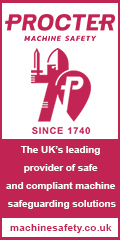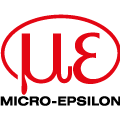
Posted to News on 21st Feb 2017, 11:32
Liquid cooling halves component space
Many renewable and marine resistor applications are moving towards liquid cooling, because it offers superior environmental protection for drive systems, as well as improved reliability and smaller component sizes. A water-cooled brake resistor, for example, can be half the size of its air-cooled equivalent and the heated water produced can be integrated into a heating system, producing further efficiencies. Here, Steve Hughes of REO UK explains the benefits.
The advantages of liquid cooling include high efficiency and low noise, and minimisation of resistor construction size by up to 80 per cent. It also provides effective cooling with high ambient temperatures, very low excess surface temperature and increased lifetime with normal operation. Constant, high performance is assured as heat is directly dissipated.
In fact, the temperature may fall below ambient, making water cooling well suited to industrial applications in which components with low surface temperatures are required. These include the wood and textile industries as well as explosion-protected environments and wind turbines. Regardless of specific sector, there are three key reasons why electrical engineers benefit from water-cooling.
With the help of simulation techniques, cooling and coolant flow can be tested and optimised early during development and manufacture. This includes simulation of gas and fluid flows, calculation of pressure, radiation, solid state temperature, fluid temperature, velocity and density as well as thermal effect on the environment. The resultant product can utilise most liquid coolants including some unusual and even corrosive liquids such as seawater, provided appropriate design considerations are made.
With this effective water cooling, component temperature can be greatly reduced, which means less stress on the insulation materials and a longer lifetime. If an air-cooled braking resistor, dissipating power at 3kW, has a surface temperature of 387 degrees Celsius, the surface temperature for an equivalent water-cooled resistor would be 35 degrees Celsius.
Whilst the technology is, broadly speaking, referred to as water cooling, the kinds of liquids that can be used as coolants are actually quite diverse and include non-conductive liquids like deionised water. Typical coolant and material suitability for water depends on percentages of calcium, magnesium, hardness, chlorides and sulphates, which can lead to deposits and corrosion.
Deionised water, also called demineralised water, must have all ions, calcium, sodium, iron, copper, chlorides, bromides, salts and impurities removed as the higher the insulation effect, the higher the corrosiveness. Glycol and aqueous solutions like ethyl glycol water have very good physical properties but are toxic, while propylene glycol water has slightly inferior properties but is more suitable for use in the food industry.
While salt water can also be used, engineers must consider the risk of deposits, severe corrosion and contamination. In contrast, dielectric liquids have properties similar to deionised water and are not very corrosive.
Pressure loss
Every component has a pressure loss that must be taken into consideration when designing the cooling system and the coolant pump. The coolant loss is a pressure difference created by wall friction and internal fluid friction in pipelines, fittings and valves.
Resistance is dependent on volume flow, geometry and Reynolds number. Calculation of the total pressure drop when connecting multiple cooling components will include a determination of the individual pressure drops. The pressure losses can be determined in advance by using simulation procedures and calculation programs.
Naturally, it's possible that the cooled components could overheat and be destroyed without the water cooling system. Therefore, the temperature of the components can be monitored by means of a temperature switch. If a nominal temperature is exceeded, the temperature switch opens and triggers an alarm contact. As an additional safety measure, all REO water cooled resistors are designed to run at full power without the cooling medium for a minimum of 5 minutes.
It's clear to see why water-cooling has been increasing in popularity in recent years, as water-cooled components offer the highest degree of efficiency in cooling. By understanding the benefits of the technology, engineers can successfully choose the right cooling method for their application and make the most of its component space.
Learn more about the possibilities of liquid cooling at www.reo.co.uk.
Want the latest machine building news straight to your inbox? Become a MachineBuilding member for free today >>
Units 2-4 Callow Hill Road
Craven Arms Business Park
SY7 8NT
UNITED KINGDOM
+44 (0)1588 673411

















